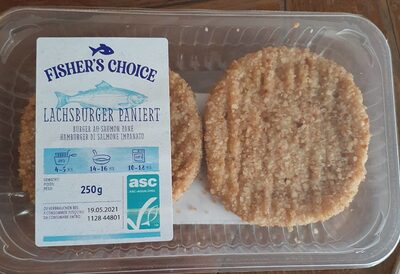Lachsburger paniert - Lidl - 2 x 125g
Ambiguous barcode: This product has a Restricted Circulation Number barcode for products within a company. This means that different producers and stores can use the same barcode for different products.
×
This product page is not complete. You can help to complete it by editing it and adding more data from the photos we have, or by taking more photos using the app for Android or iPhone/iPad. Thank you!
×
Barcode: 20232924
Quantity: 2 x 125g
Brands: Lidl, Fishers Choice
Categories: Seafood, Fishes and their products, Fishes, Fish preparations, Fish patties
Labels, certifications, awards:
Made in Germany, Responsible aquaculture, Responsible aquaculture ASC
Traceability code: DE BW-07439 EG, ASC-C-00043
Countries where sold: Germany, Switzerland
Matching with your preferences
Environment
Packaging
Transportation
Labels
Report a problem
Data sources
Product added on by kiliweb
Last edit of product page on by roboto-app.
Product page also edited by itsjustruby, moon-rabbit, prepperapp, yuka.sY2b0xO6T85zoF3NwEKvln1EfcfA_wnHLwzTwX_b49SKBJvtOP9bu9LHIas.
If the data is incomplete or incorrect, you can complete or correct it by editing this page.











